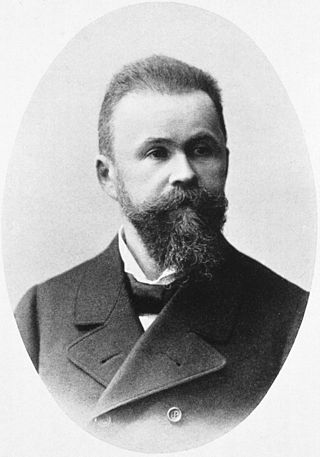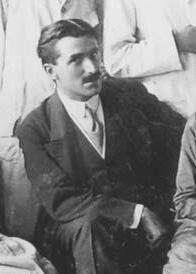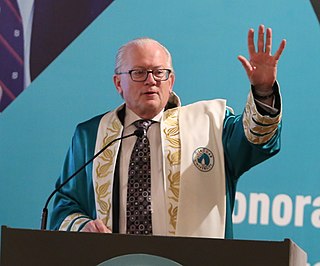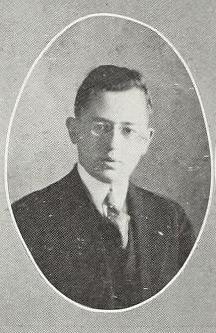
Neurology is the branch of medicine dealing with the diagnosis and treatment of all categories of conditions and disease involving the nervous system, which comprises the brain, the spinal cord and the peripheral nerves. Neurological practice relies heavily on the field of neuroscience, the scientific study of the nervous system.
Clinical neurophysiology is a medical specialty that studies the central and peripheral nervous systems through the recording of bioelectrical activity, whether spontaneous or stimulated. It encompasses both research regarding the pathophysiology along with clinical methods used to diagnose diseases involving both central and peripheral nervous systems. Examinations in the clinical neurophysiology field are not limited to tests conducted in a laboratory. It is thought of as an extension of a neurologic consultation. Tests that are conducted are concerned with measuring the electrical functions of the brain, spinal cord, and nerves in the limbs and muscles. It can give the precise definition of site, the type and degree of the lesion, along with revealing the abnormalities that are in question. Due to these abilities, clinical neurophysiology is used to mainly help diagnose diseases rather than treat them.

CarlWernicke was a German physician, anatomist, psychiatrist and neuropathologist. He is known for his influential research into the pathological effects of specific forms of encephalopathy and also the study of receptive aphasia, both of which are commonly associated with Wernicke's name and referred to as Wernicke encephalopathy and Wernicke's aphasia, respectively. His research, along with that of Paul Broca, led to groundbreaking realizations of the localization of brain function, specifically in speech. As such, Wernicke's area has been named after the scientist.

Ugo Cerletti was an Italian neurologist who discovered the method of electroconvulsive therapy (ECT) used in psychiatry. Electroconvulsive therapy is a therapy in which electric current is used to provoke a seizure for a short duration. This therapy is used in an attempt to treat certain mental disorders, and may be useful when other possible treatments have not, or cannot, cure the person of their mental disorder.

Hans Berger was a German psychiatrist. He is best known as the inventor of electroencephalography (EEG) in 1924, which is a method used for recording the electrical activity of the brain, commonly described in terms of brainwaves, and as the discoverer of the alpha wave rhythm which is a type of brainwave. Alpha waves have been eponymously referred to as the "Berger wave."

The Institute of Psychiatry, Psychology and Neuroscience (IoPPN) is a research institution dedicated to discovering what causes mental illness and diseases of the brain. In addition, its aim is to help identify new treatments for them and ways to prevent them in the first place. The IoPPN is a faculty of King's College London, England, previously known as the Institute of Psychiatry (IoP).

Adolf Meyer was a Swiss-born psychiatrist who rose to prominence as the first psychiatrist-in-chief of the Johns Hopkins Hospital (1910-1941). He was president of the American Psychiatric Association in 1927–28 and was one of the most influential figures in psychiatry in the first half of the twentieth century. His focus on collecting detailed case histories on patients was one of the most prominent of his contributions. He oversaw the building and development of the Henry Phipps Psychiatric Clinic at Johns Hopkins Hospital, opened in April 1913, making sure it was suitable for scientific research, training and treatment. Meyer's work at the Phipps Clinic is possibly the most significant aspect of his career.
Loren Richard Mosher was an American psychiatrist, clinical professor of psychiatry, expert on schizophrenia and the chief of the Center for Studies of Schizophrenia in the National Institute of Mental Health (1968–1980). Mosher spent his professional career advocating for humane and effective treatment for people diagnosed as having schizophrenia and was instrumental in developing an innovative, residential, home-like, non-hospital, non-drug treatment model for newly identified acutely psychotic persons.
Pierre Flor-Henry is a Canadian psychiatrist, researcher, lecturer, and professor. His most important initial contribution was the demonstration in the study of epileptic psychosis, that schizophrenia relates to left and manic-depressive states relate to right hemisphere epilepsies.

John Michael Newsom-Davis was a neurologist who played an important role in the discovery of the causes of, and treatments for, Myasthenia gravis, and of other diseases of the nerve-muscle junction, notably Lambert–Eaton myasthenic syndrome and acquired neuromyotonia. Regarded as "one of the most distinguished clinical neurologists and medical scientists of his generation," he died in a car accident in Adjud, Romania, having visited a neurological clinic in Bucharest earlier the same day.
Maximilian Fink is an American neurologist and psychiatrist best known for his work on ECT. His early work also included studies on the effect of psychoactive drugs on brain electrical activity; more recently he has written about the syndromes of catatonia and melancholia.
Richard T. Johnson was a physician and scientist at the Johns Hopkins University School of Medicine. Johnson was a faculty member in the Department of Neurology since its inception in 1969 and was the former head of the department. His research into the effects of viruses on the central nervous system has been published in over 300 scientific articles, and Johnson was both a journal and book editor and the author of an influential textbook, Viral Infections of the Nervous System.

Albert Moore Barrett, M.D. (1871-1936), an American physician, was professor of psychiatry at the University of Michigan, and credited with the establishment of the first psychiatric hospital within a university.

Abraham Myerson (1881–1948) was a Lithuanian neurologist, psychiatrist, clinician, pathologist, and researcher. He had a special interest in the heredity of psychiatric and neurologic disease.
Harry C. Solomon (1889–1982), an American neurologist, psychiatrist, researcher, administrator, and clinician, was among the first to advocate for major changes in public psychiatry. He called for the closure of large, public mental hospitals and replaced with community-based facilities.

George Hughes Kirby (1875–1935) was an American physician and psychiatrist, administrator, and educator, who contributed to the advancement of psychiatry in the United States.

Stephen Michael Stahl is an author and professor of psychiatry with expertise in psychopharmacology. He is currently a professor at the University of California, San Diego, and serves as Honorary Fellow in psychiatry department at the University of Cambridge. He is also the chairman of Neuroscience Education Institute (NEI) and Arbor Scientia Group.

Michael Jeffrey Aminoff is a clinical neurologist and neurophysiologist whose work currently focuses on treating Parkinson's disease and related movement disorders. He lives in San Francisco, California.

Jacob Sergi Kasanin (1897-1946) was a Russian born, American trained psychiatrist who introduced the term acute schizoaffective psychoses in 1933. He was known as Yasha to those close to him. He was born in Slavgorod, on 11 May 1897, and moved to the United States in 1915. He graduated from the University of Michigan with a Bachelor of Science in 1919, Doctor of Medicine in 1921 and a Master of Science in Public health in 1926.
Joseph Thomas Coyle Jr. is an American psychiatrist and neuroscientist that is known for his work on the neurobiology of mental illness, more specifically on schizophrenia. He is currently the Eben S. Draper Chair of Psychiatry and Neuroscience at Harvard Medical School in Boston, Massachusetts. He was President of the Society of Neuroscience from 1991–1992, and also the president of the American College of Neuropsychopharmacology in 2001. He is a member of the Institute of Medicine.












